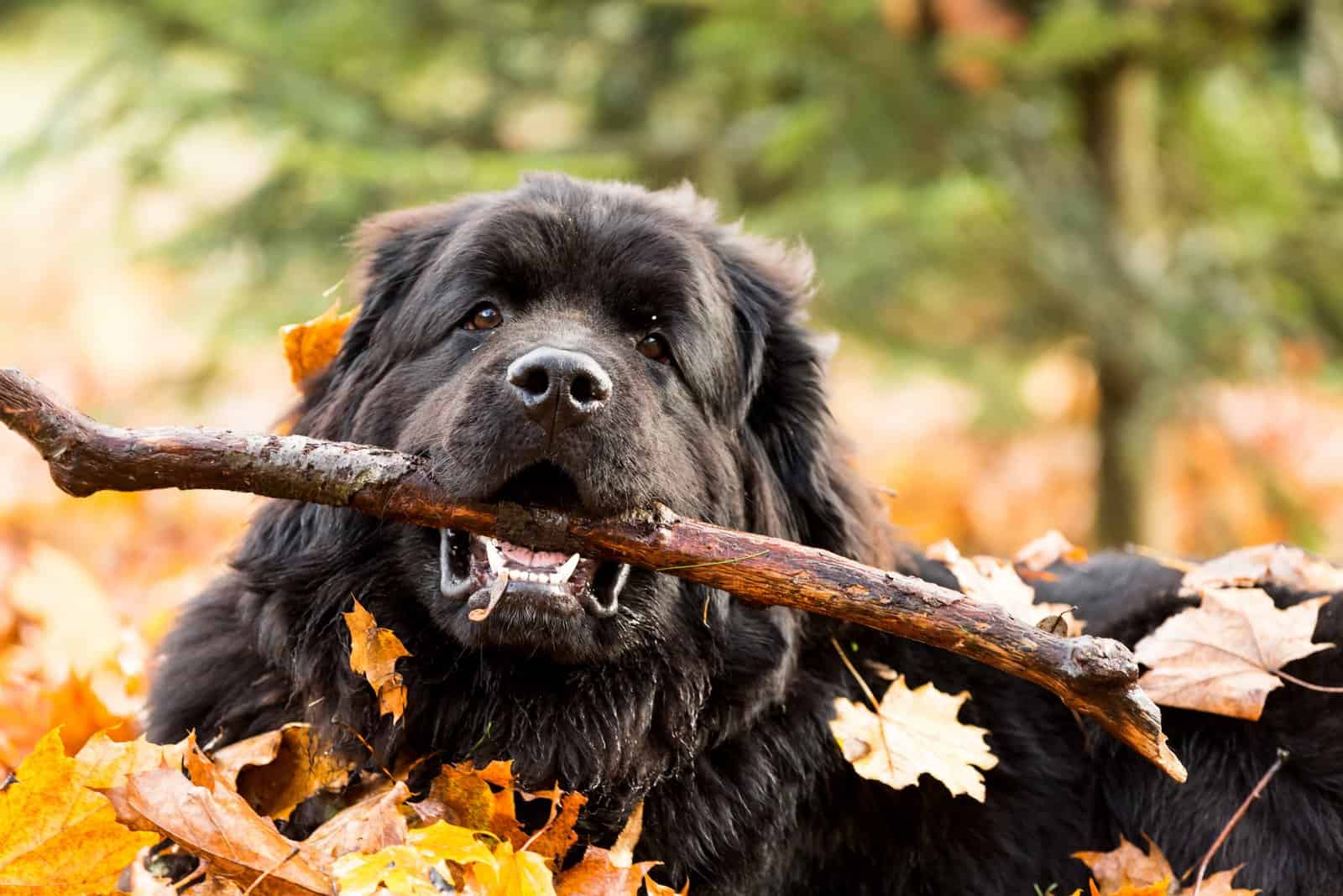Newfoundlands are giant canines, indeed! If you’re interested in how big they get from early puppyhood to early adulthood, you will love this Newfoundland growth chart!
Fortunately, their size and looks don’t represent their temperament. Like Rottweilers, Newfies might look tough, but they’re great family canines and love spending time with kids!
If you’re planning to get a Newfie pup, prepare yourself in time with this Newfoundland growth chart and other helpful information about your future pet!
Newfoundland Growth Chart: How Big Do Newfoundlands Get?
Newfoundland Puppy Weight Chart
[table id=420 /]
Newfoundland Puppy Height Chart
[table id=421 /]
Newfoundland Growth Chart: How Fast Does A Newfoundland Grow?
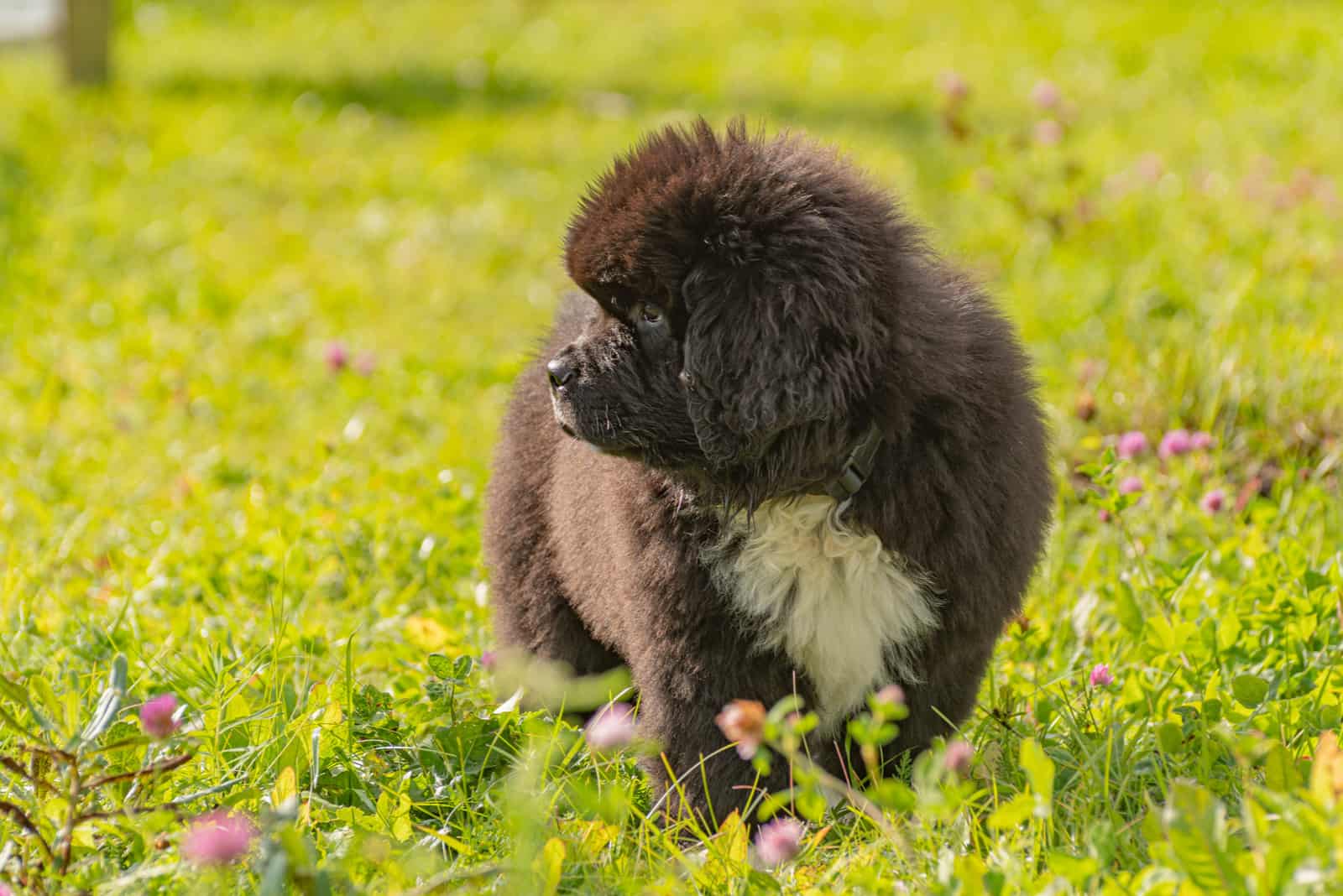
This type of canine should be fully developed by the age of two. The Newfoundland’s size can often trick you into thinking they’re either older or early developed.
That’s why most people fear them, even though they’re still just puppies that love to play.
After you read the next few paragraphs about the Newfoundland’s growth process, you’ll become a master at recognizing the age of a Newfie (sort of)!
First Two Weeks Of Life
During the first few weeks of life, there’s not much that you can do about your Newfoundland puppy.
Essentially, your main concern in this period is to care about the new mom and her needs. Her state dictates how effectively she can care about her puppies and fulfill their needs.
In order to maintain her physical and mental strength, the Newfoundland mommy will require additional nutrients through food and supplements.
The puppies are entirely reliant on their mom, and because they still can’t see or hear, they’re not able to get visual or auditory sensory signals from the environment.
In case something happens to the mother, you should be prepared to call your veterinarian immediately as they can solve the issue of the mother’s health and help you find the proper way to feed your pups with a specific milk-like formula.
From The Third Week To The Third Month
No one knows the best time to wean puppies off of breast milk than their mom. However, that doesn’t mean you can’t be of help.
The best way to help her is to offer nutrients to her young that will fulfill their needs before nursing. This way, you’ll ease the whole process for the mommy.
Because her pups are completely aware of the environment surrounding them, the Newfoundland dog mom can finally take some time for herself.
If you notice that the mother is trying to retreat from her pups in order to lay down and get some rest, put a bowl with a mix of dog food (kibbles might be the best choice) and some puppy formula so the puppies can eat without their mom.
You can observe the pups’ behavior to see whether they’re finally ready to eat solids.
As the time passes, you can change the ratio of the kibble and the formula until the latter one is completely removed. Even though the pups will be ready to completely wean off breast milk during their eighth week of life, it would be better to stop giving formula around the third month (10 to 12 weeks old).
From The Fourth To The Ninth Month
This is usually the time when Newfoundland pups go to their new owners and start a new life as young adults.
Even though they might still seem like babies, these canines definitely don’t look like ones. Since they belong to the giant breed, they soon turn from sweet puppies into large dogs.
A Newfoundland pup isn’t the only large-breed canine that looks like an adult-sized dog before it turns nine months old. Saint Bernards, Great Danes, English Mastiffs, and others develop similarly to Newfoundlands.
The average weight of a Newfie pup is around 60 lbs., at just 16 weeks of life, which is the best indicator of how fast it grows.
As you can see in the weight chart mentioned above, this isn’t the final adult weight of a Newfoundland; therefore, be prepared for a true giant!
You’re already aware by now that regular training is a must with this dog breed. However, if you’re unsure which exercises are appropriate for your pet’s size and age, you can get your pup into a professional training program.
From The Tenth To The Eighteenth Month
Those who are well-familiar with Newfoundlands and their growth won’t be surprised by their size at this period of life.
However, most people around you will surely be surprised to hear that this still isn’t the adult size of your pup, and that it’s going to get even bigger.
However, as you can see on the chart, things are slowing down a little bit, so there won’t be any more huge surprises, but this still isn’t your pet’s final size.
It would help if you also keep in mind that your pet’s growth plates are still open; therefore, choose shorter walks and light exercises so you don’t harm the progress being made.
The best way to keep track of the tempo is to add five minutes of daily walking for each month of their life. For example, if your Newfie is a ten-month-old canine, the two of you should go for a 50-minute walk once a day.
This is the maximum time that won’t cause any damage to your pup – if you see that it’s still not ready for such walks, reduce the time a little until you’re sure that your pup is feeling comfortable.
Adult Size
The Newfoundland canine is considered a young adult around the age of two, which is quite late if you consider that breeds such as Samoyeds, Cane Corsos, and German Shepherds reach this stage at 18 months of age.
However, female and male German Shepherds are different at this stage in a way that female GSDs continue to mature until they’re 24 months old, whereas Newfies and male GSD pups take even longer (up to two and a half years).
On the other hand, giant dogs, like Bernese Mountain dogs, mature slower than Newfoundland pooches, and they reach their full size at three years of age, so your pup isn’t the last breed to become an “adult” at the age of two.
It’s essential to keep in mind that even though your pup has reached its full size in height, it doesn’t mean that it can’t grow any bigger when it comes to weight.
This is actually one of the biggest traps that most owners fall into. Your canine’s size shouldn’t be an excuse to give the dog more food than it really needs.
Large-breed dogs can quickly become overweight, which is why you should take good care of your pup’s nutrition and physical activities.
However, it’ll take them much longer to mature than small dogs, such as Chihuahuas and Poodles, or mixed types like Cavapoos (a Miniature Poodle and a teacup Cavalier King Charles Spaniel cross), Maltipoos (a Maltese and a Poodle cross), etc.
Newfoundland Growth Chart: How Much Does A Full-Grown Newfoundland Weigh?
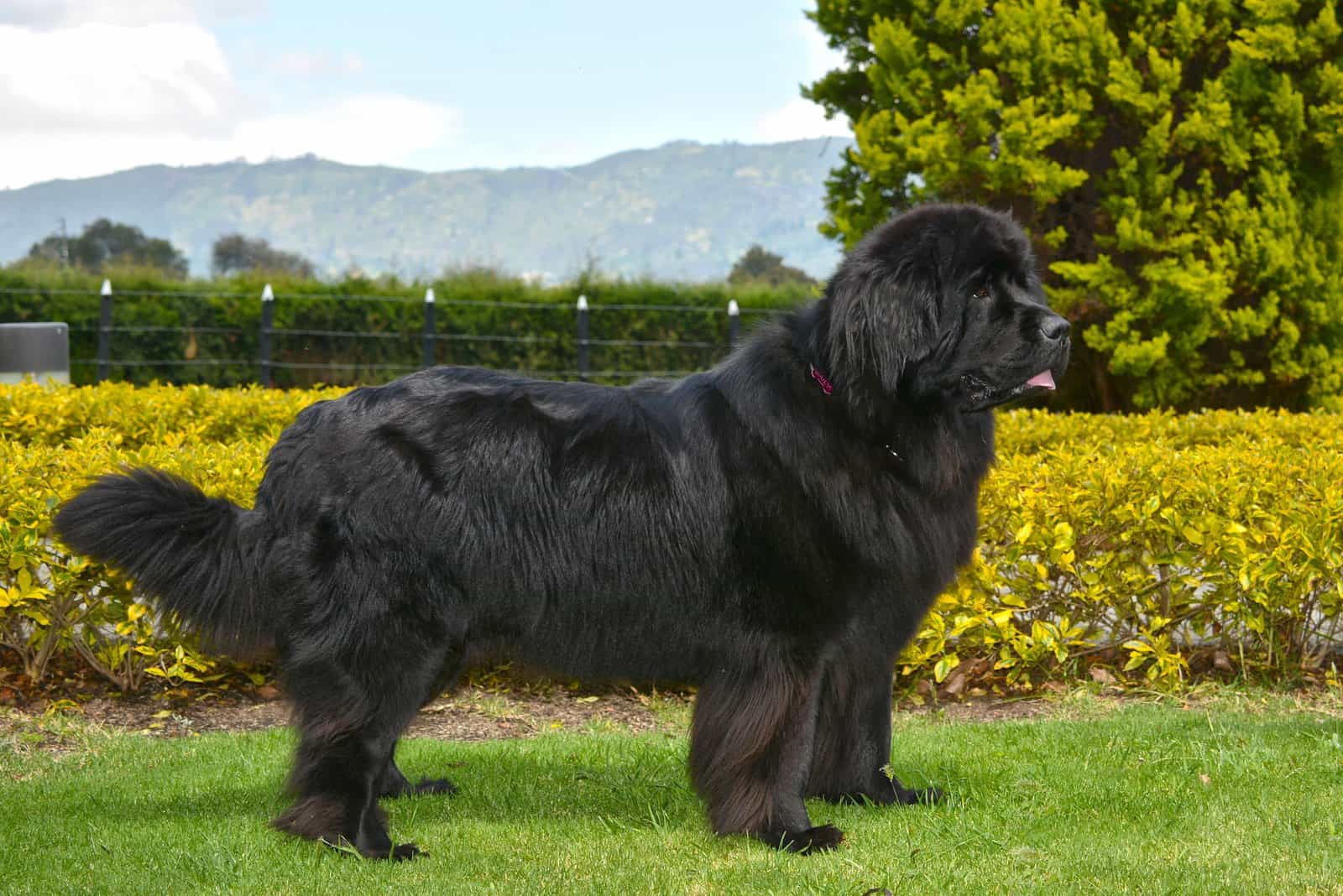
Essentially, the table that is displayed above represents the average puppy growth chart, which shows their development until they reach their young adult size.
According to the Newfoundland breed standard, and the mentioned chart, the expected weight of a full-grown male Newfie canine is 130 to 150 lbs, while female Newfoundlands weigh up to 120 lbs (plus or minus a few pounds).
However, this is the average weight gain of Newfies that are raised in ideal conditions.
On the other hand, your pup might easily become over or underweight, depending on its diet and other factors, such as:
• Training – Newfies require appropriate activity since they have a significant tendency for weight gain. The canine shouldn’t be allowed to sit or lay down without any exercise throughout the day. Exercise is a must, especially for pups that are on a high-calorie diet. One condition for the ideal weight is to balance the calories and activities on a daily level in order to avoid any unwanted weight gain or loss.
• Genetic background – When it comes to the size of your pup, it’s more than clear that some things are just not up to you, but the genetic background of the pooch. The parent’s size is equally essential for your canine’s growth. Newfie pooches often grow up to be around the same weight and height as their Newfoundland mom and dad.
• Health – The growth rate of this breed is directly related to its health. Like people, Newfies can feel the physical impacts of specific health problems; therefore, your pet’s weight might be heavily dependent on a possible condition it may have.
• Gender – This part might not be a big surprise, but it’s worth mentioning that the pup’s gender has an influence on its size. Male Newfoundlands are generally bigger than their female counterparts, which is clearly visible from the growth chart as well.
Newfoundland Growth Chart: Is Your Dog Underweight Or Overweight?
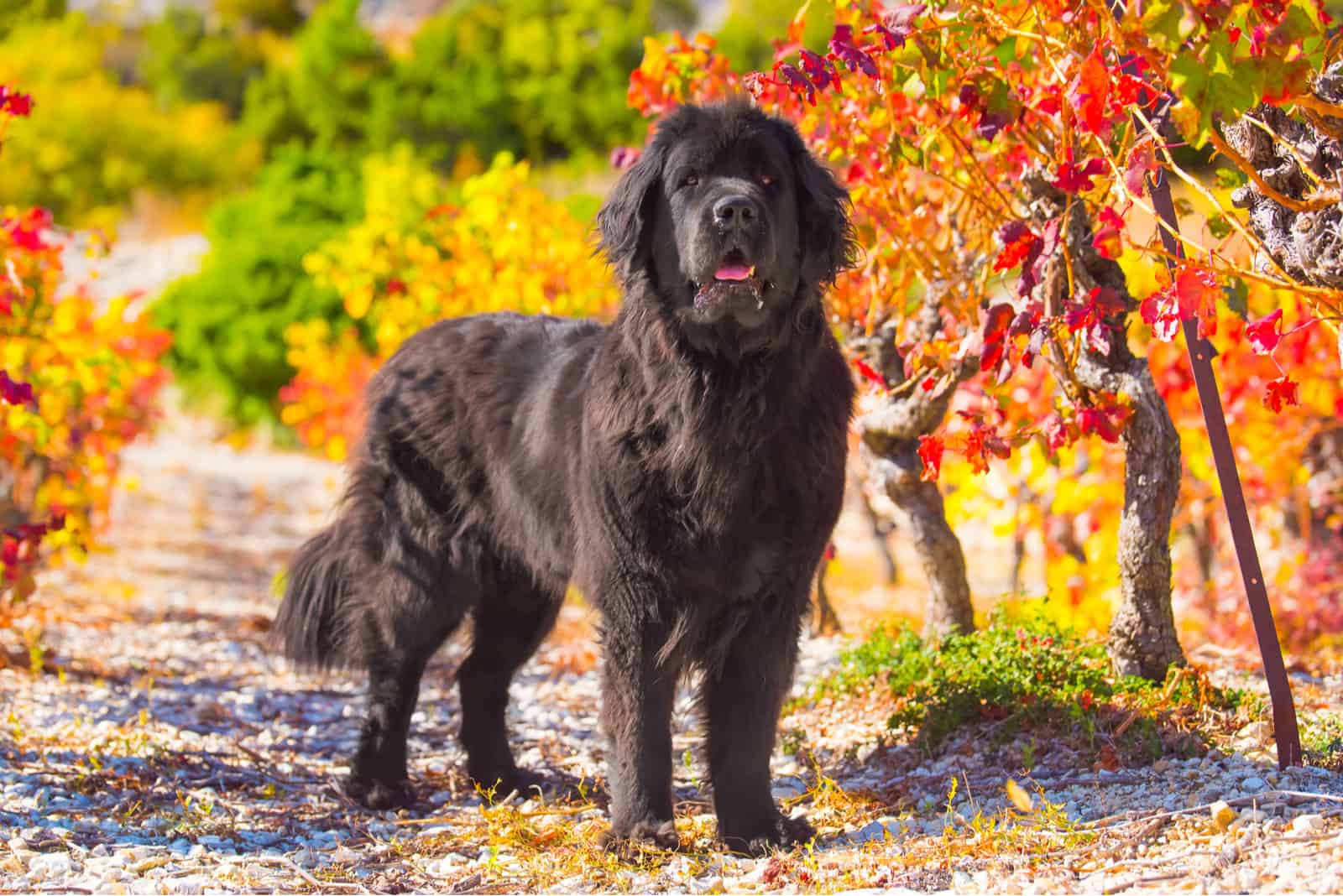
Your pet’s growth rate is determined by variables that were briefly covered above.
The first thing that should be clear is that weight loss is just as unhealthy as excessive weight gain.
Some of the most common reasons why your pup gains or loses weight are nutrition, exercise, health problems, and certain medications.
The best way to know if your pet is either obese or underweight is by taking it to an animal healthcare professional who’ll calculate the proportion of its body fat.
If you’d rather avoid going to the vet for this reason, you can measure your pet at home.
The whole process is relatively easy, and it requires you to follow the instructions of the Body Condition Score system, which helps you estimate the approximate state of your canine’s body.
How Do You Measure A Newfoundland Dog’s Weight?
There are two ways to measure the weight of a Newfie, which are basically the same for all other dog breeds. The first way is to check certain parts of your dog’s body.
For example, the back of your dog’s body, including its ribs and its spine, can show whether your dog is underweight or overweight.
The same goes for the hips, belly, and shoulders. If you can’t feel the dog’s bones when you touch these areas, that means your pet is overweight. If you can feel the bones and a little bit of flesh on them, it means your dog has ideal weight.
However, if the dog’s bones are immediately felt under the fingers, your pet is definitely underweight.
Another way to measure a Newfoundland’s weight is to take a bathroom scale and your pet. Make sure that you are able to pick up your Newfoundland and stand on the scale together without any sudden moves.
This might be quite a challenge for owners who are not strong enough, which is why they usually use the first method. If your pet has been through obedience training, you will have no problem during the scale measurement. Both of these ways are reliable indicators of your dog’s body state.
How Do You Help Your Pet If It’s Overweight?
Unfortunately, obesity is becoming one of the most common health issues among puppies and adult dogs. It’s usually caused by a lack of physical activities or an improper diet.
However, instead of simply talking about the symptoms and causes of obesity, it’s time to offer more concrete solutions that will help your Newfoundland live at least a bit longer than ten years, which is its minimal life span.
Physical Activity
Practice makes perfect in every way, including the shape and health of your canine.
Training should become a regular habit from an early age in your pet’s life, but it’s also better late than never.
If you haven’t had the chance or knowledge to include regular exercises in your pet’s life before, it’s high time to start practicing.
Newfoundlands are big and strong canines that require a lot of exercise to fulfill their needs and prevent them from becoming couch potatoes.
However, be prepared for a stubborn Newfie that might show you resistance initially, especially if you’re starting late with the training.
Your Newfie might be good with kids, but when it comes to exercising, it might not be so good-willed. However, if you’re persistent, your pup will get used to it with time.
Diet
Food is a crucial part of your pup’s development, especially for large breeds like Newfoundlands, Great Danes, Dobermans, Cane Corsos, etc.
You can improve your canine’s life simply by offering a healthy and balanced diet from an early age. Feeding your pup with proper puppy food can give you great results in your pet’s adult life.
Food doesn’t just cause obesity; it can also be a cause of malnutrition. As an owner, you should know how big of a portion is enough for your pup.
Feeding a giant, such as a Newfie, can be quite tricky and cause confusion in the portions. While some owners fear that their canines are getting too large because of the big portions, there are those who practice giving the same or a similar amount of food as for a medium-sized pup.
Both cases are understandable, especially the latter one, where the owner fears that a bigger portion might lead their canine to obesity.
If you’re not sure whether or not you’re feeding your pet right, you can always ask for an expert’s help. Also, you can find useful information in our Newfoundland feeding chart.
Genetics
This is one of the factors that generally can’t be impacted. If the Newfie’s parents have large bones, there are high chances that your canine will have the same.
But, you can use your pup’s genetics to help it maintain at least a minimum of body fat!
Newfoundlands are known as working dogs that are very strong, with a sturdy muscle frame.
You can use their body constitution for strength training. This way, you’ll keep them fit and help their muscles mimic the strength of their ancestors.
Newfoundland Growth Chart: What Is The Average Height Of A Newfie?
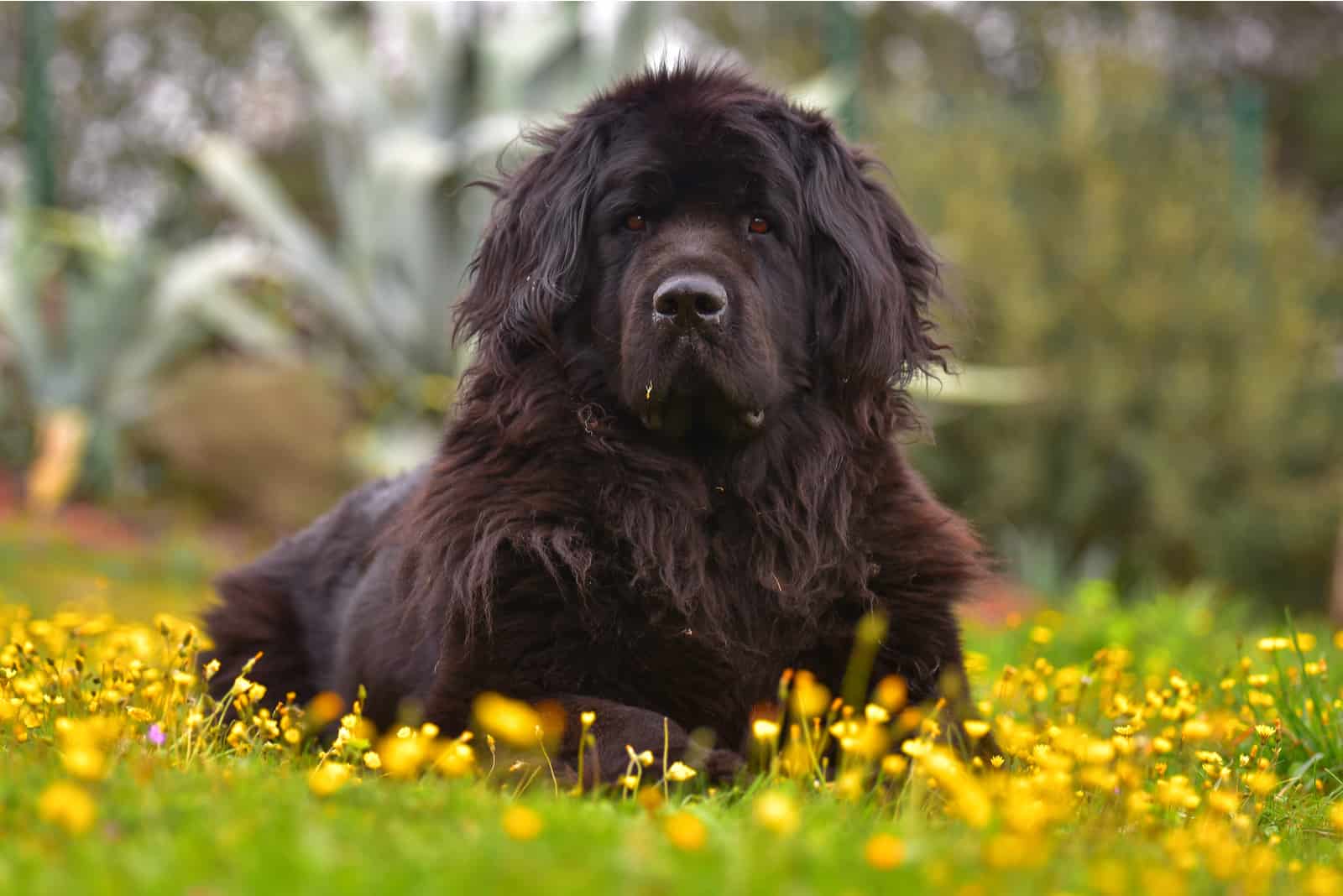
The average height of this type of dog mainly depends on gender.
For example, most male Newfies will grow up to 28 or 29 inches, while female pups stop growing at 26 inches at the top (the average height is about 24 to 25 inches).
There can be certain variations in height, but they’re rather an exception than a rule.
Essentially, Newfoundland female pups can be compared to Labrador Retrievers, which grow up to 25 inches as well. On the other hand, male pooches are relatively closer to a Doberman’s growth rate.
How Do You Measure A Newfoundland Dog’s Height?
Measuring a big canine, such as a Newfoundland, might seem like a real challenge when trying to keep your pup calm while standing on a bathroom scale.
However, once you try to measure your pet’s height, you’ll realize that weight measurement is a piece of cake.
But, even though it’s not the easiest task you’ve ever done, it’s not the worst one either. Sooner or later, you will have to do it because you’ll need precise measures of your pup.
You will need a carpenter’s level, some cardboard, a measuring tape, a pencil, and an available wall to place the cardboard on for height calculation.
Steps To Measure Your Pet
The first step is to place the cardboard on the wall. You can tape it or choose whatever suits you the best. The cardboard is there to protect your wall from any scratches and pencil markings.
Once you’re done, it’s time to position your canine next to the wall. However, make sure that the Newfoundland doesn’t lean against the surface or make any movement whatsoever.
This is the trickiest part because most canines can’t stand straight for more than a couple of seconds and because most owners can’t really be sure whether the dog is touching the wall or not because of its thick coat.
The second step is to try and take the height measure. If you can’t keep the pup calm during this step, I’d suggest you call a family member or a friend for help.
It’s completely okay if you can’t measure your pup by yourself.
The third step would be to find the correct location of the canine’s withers, which are usually placed above the shoulders.
The Newfie has a lot of fur, so the withers probably won’t be visible during the measurement, but you’ll be able to manage this by placing the tape on the cardboard and measuring the height from the front paw up to where the withers should be.
The fourth step is the most challenging one, although it seems quite simple at first. It’s time to take the measurements!
During this step, your task is to take the pencil and mark the spot on the cardboard. After that, you can put your canine to the side and take the measurements of the wall up to the marked point, which will be your canine’s height.
FAQs
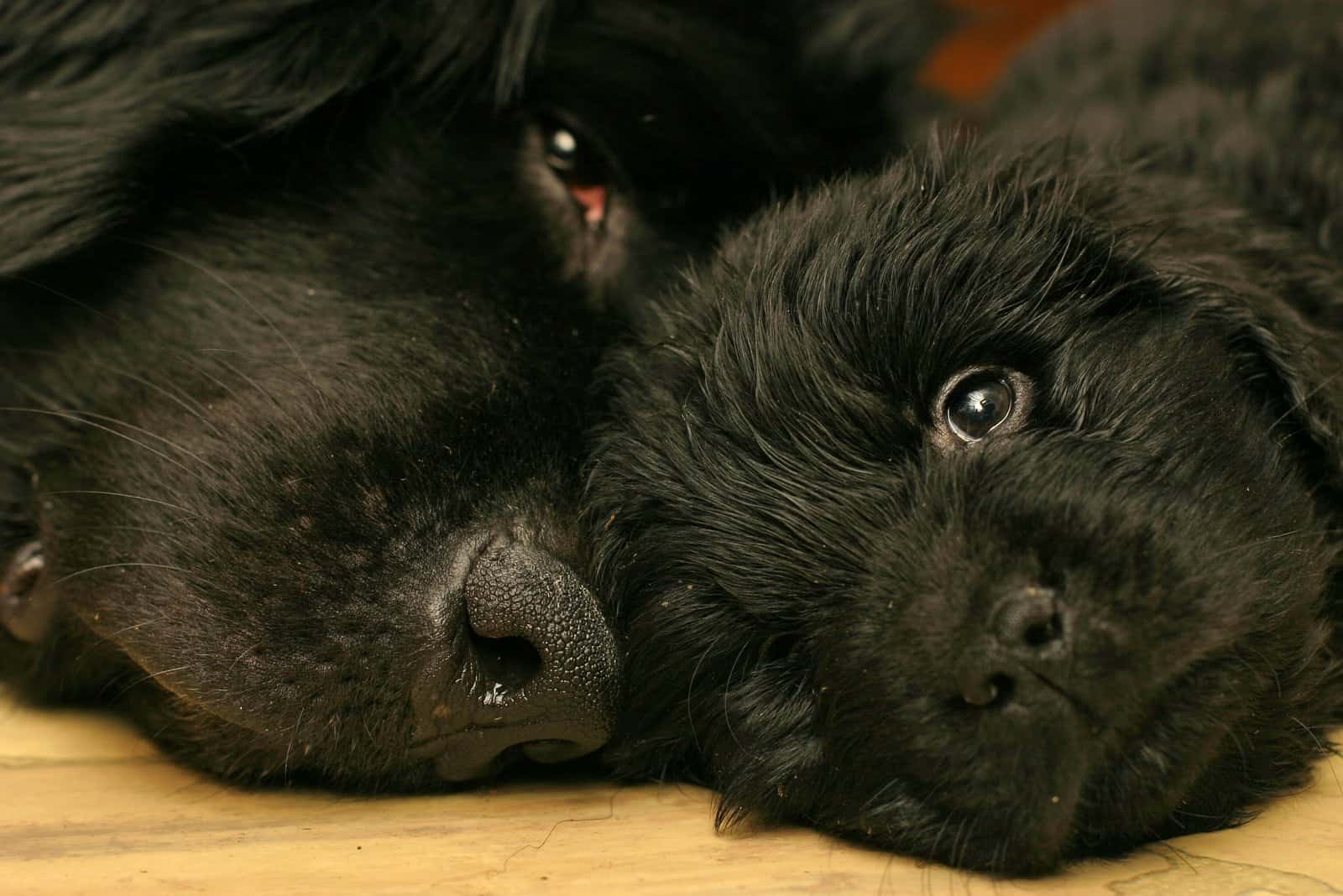
Why Did My Pup Stop Growing?
Many pups aren’t able to develop to their full potential because of a variety of reasons. Unfortunately, most of the time, it turns out that there’s a particular health problem behind the halt of growth.
If you notice that your pet is underweight (50 lbs or below at six months of age), there’s clearly an issue behind it.
There are two possible reasons why puppies or young adult dogs stop growing during their development. One of them is the presence of endoparasites, such as tapeworms and hookworms, and the other one is a liver shunt in canines.
Parasites
These parasites can be found in the canine’s digestive system, and you’ll probably notice them as soon as your dog poops.
Parents of the pup can be transmitters of the parasites, but they’re not the only source of it.
Sometimes, your pup might get them simply by spending time in the environment and investigating everything with its nose and taste buds.
This is also known as one of the most frequent reasons for slower development of the pup. Although I do share your concern, there’s nothing to worry about, as your pup will be perfectly fine as soon as it goes through the deworming process.
Liver Shunt
This is essentially a condition that enables the blood to flow freely around the liver instead of going through it because of the improper link between the vein system and one of its parts with another vein that causes a hepatic shunt.
This is a more serious reason for slow growth, which should be treated as soon as possible if you notice that your canine isn’t developing at all or isn’t making enough progress.
What Are The Most Common Health Issues of Newfoundlands?
Unfortunately, giant breeds have a significantly shorter lifespan than small breeds, even if you take great care of them.
Newfoundlands are also prone to a large number of health conditions that can have an impact on their life expectancy.
Some of the illnesses mentioned below can have a direct influence on the canine’s development and growth rate, which, in turn, shortens their lifespan even more:
• Subaortic Stenosis – This is a cardiovascular condition in which the blood can’t be pumped into the heart because of an obstruction in the aortic valve.
• Elbow and hip dysplasia – This is considered one of the most common developmental malfunctions, and it can cause abnormal gait and bone diseases, such as degenerative joint disease or osteoarthritis.
• Cataracts – This condition basically creates a “cloud” in your pet’s eyes, so everything looks like it’s in a deep forest fog to your canine. This type of eye disease is usually inherited, but it can also be caused by other medical issues, such as diabetes.
• Von Willebrand’s disease – If you have a canine with this type of disease, you should be careful about it, especially if the canine starts bleeding for any reason, even from a scratch. Unfortunately, if your pet suffers from Von Willebrand’s, that means it doesn’t have enough proteins that can form a blood clot.
• Osteochondrosis Dissecans – This is an acute disorder characterized by displacing the damaged articular cartilage from the bone. This condition reflects on the knee, shoulder, elbows, and joints in general.
• Epilepsy – This is one of the most common neurological diseases that affect more than 0.7% of dogs globally. Frequent and uncontrolled seizures are the hallmark of this disease, and the term is considered an umbrella term for a variety of neurological disorders.
• Entropion – This medical condition is described as the reversal of the bottom eyelid, which results in lashes irritating the eyeball and causing pain and distress.
• Cystinuria – This condition is treated like a congenital metabolic fault that directly impacts the canine’s kidneys. Essentially, this condition means that the dog’s kidneys aren’t able to process cystine, which then forms into stones and uroliths.
Newfoundland Growth Chart: Wrapping Up
Along with the Newfoundland growth chart, I’ve tried to include other valuable details to assist you during the first two years of your pet’s life. Of course, most of the information and advice can be applied to the later years of your canine’s life.
I hope this article helped you create a picture of what your Newfie will look like in a few months or in a year.
High-quality food, regular exercise, and happy owners are guarantees for a longer and more enjoyable Newfoundland pup’s life.
If you’re worried about your giant pup’s lifespan, make sure to get a dog from a reputable breeder who can guarantee its health.
Of course, if you’re more interested in rescuing pups, you can get one from an animal shelter, a kennel, or a rescue center. If you’re in a dilemma, I’m sure this quote about rescued dogs will help you make your final decision:
“If you pick up a starving dog and make him prosperous, he will not bite you. This is the principal difference between a dog and a man.”
Mark Twain
Read Next:
Newfoundland Breeders In Ontario: Top 5 Picks For 2022!
8 Most Reputable Newfoundland Breeders In The UK (2022)
